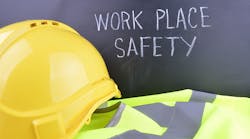Electrical work typically involves overhead lifting. Picking up an item changes how you are supporting your center of gravity as does the subsequent series of motions to lift it overhead. Whether the item is light or heavy, performing the lift involves many muscles, joints, ligaments, and tendons. All these human components are at risk for injury.
To protect your back, neck, knees, and shoulders:
- Warm up before lifting (especially if the object is heavy). For example, push your hands toward the ceiling as far as you can; hold for 10 seconds (you will feel this in your shoulders).
- Ensure you are on a stable surface. You don’t want to be trying to catch your balance while lifting anything, you want to be balanced before and during the lift.
- Visualize the motion before starting and ensure you’re in a straight line under the lifting path. Rotating at the waist while lifting increases the risk of back injury. Don’t rotate at the shoulders, either.




